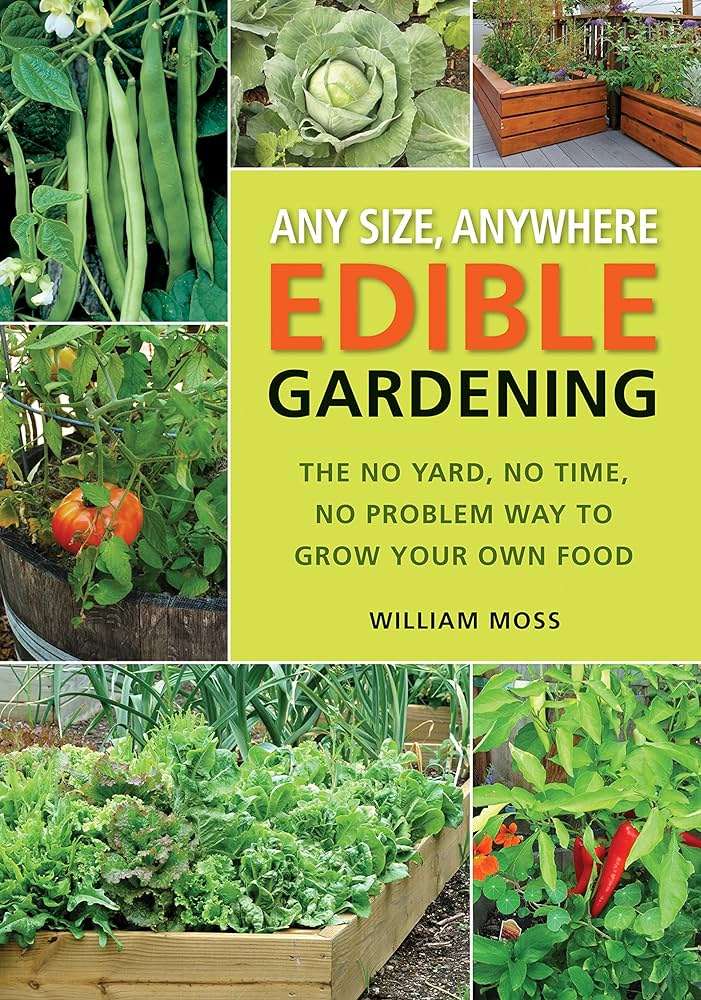
When I read a book I have the habit of highlighting certain passages I find interesting or useful. After I finish the book I’ll type up those passages and put them into a note on my phone. I’ll keep them to comb through every so often so that I remember what that certain book was about. That’s what these are. So if I ever end up lending you a book, these are the sections that I’ve highlighted in that book. Enjoy!
Ask gardeners about their best veggie crops and they’ll start to smile.
Vegetable plants need lots of sunlight. Most veggies would prefer 8 or more hours of direct light. Plants labeled for full sun exposure need 6 or more hours of unobstructed sunlight. part sun plants require 4-6 hours. Part shade plants thrive in dappled light or 2-4 hours of sunlight.
Soil grows plants. Dirt is what is on the bottom of your shoe.
Till or dig generous amounts into the top 6 inches of soil. If you want a vigorous workout, incorporate organic matter to 12 inches deep.
When growing veggies, you will still need to amend the top layer annually.
Materials suitable for composting include garden and kitchen debris, such as leaves, stems, spent flowers, grass clippings, straw, cornhusks, peelings, rinds, apple cores, and so forth. Hard or fibrous materials, such as cornstalks, nutshells, and rinds, should be chopped into smaller pieces to speed decomposition. Avoid using wooden branches, bones, animal fat to speed decomposition. Avoid using wooden branches, bones, animal fat (including cheeses), and fresh animal droppings. These decompose slowly and can attract unwanted pests.
Finished compost will look loose, rich, and woodsy, It can then be worked into the top layer of soil or sprea across the ground like mulch.
If a plant grows in the wrong area and is upsetting the intent and integrity of your garden, then feel free both to call and treat it like a weed.
After a long day, hand weeding can be relaxing, almost therapeutic. Some of my most creative thoughts and plans can bubble up to consciousness. It’s a time to dream of the future and reflect on the past.
Some apartment complexes are acknowledging the need for garden space. Included with the rental space is a raise bed on the grounds.
Harvest carrots when they are small: a 2-inch diameter ensures that they are sweet and tender.
Both kale and collards taste sweeter if they have gone through a frost.
Brussel sprouts develop frtom the bottom up. Harvest the lowe sprouts when they are still tight. If the leaves begin to open, the flavor is reduced.
Cucumbers usuall spread out on the groun, but in a small space garden training them up a trellis produces much higher yields per square foot.
Squash blossoms are prized grommet food items. Pick on the male blossoms, which tend to be located away from the central stalk and have long, skinny stems with no swelling at thir base. Only female stalks turn into squash. But don’t harvest all the male blossoms or the femal blossoms may not get pollinated.
To help bees and butterflies find your plants, interplant with annual flowers. Marigolds and nasturtiums attract pollinators and repel insect pests.
Cucumbers have a higher nutritional content if they’re left unpeeled.
In late summer, when the peak of the heat has passed, you can sow field greens again for a fall crop. This is a good time to try intercropping. Since field greens will grow in partial shade, they can be sown beneath peppers, okra, and beans.
Unless you are removing the whole plant, do not cut all the leaves. take the olds, outer leaves and allow the younger ones to develop.
Onion seed does not store well, so the seed packet should be marked with the current year’s packed-for date.
When the onion bulbs look swollen and about three-fourths of the leaves have fallen over, the onions are ready. Carefully dig them up. Cut the roots off 1 inch below the bulb. Cut the neck 2 inches above the bulb.
Sugar compounds in peas begin to break down rapidly after picking, so plan to eat them within hours of picking to get the best flavor.
Potatoes require a deep, loose soil for large smooth taters. If you don’t have sandy soil, incorporate some sand in your garden.
Mulch also keep developing potatoes in the dark; if sunlight hit the potatoes they will turn green and become inedible.
Don’t think about planting sweet potatoes until warm weather arrives.
Never dig soil from the garden for containers. Buy a quality potting soil mix and you will be happier with the results.
Soil is the key to growing delicious tomatoes. Good soil makes a good tomoato great.
The growth of tomatoes is either indeterminate or determinate. Indeterminate tomatoes continue to grow throughout the growing season. There is theroretically no limit to their growth. Under ideal conditions (warm temperature, adequate support, consistent fertilization, adequate water, and limited diseases and pests). indeterminate tomoatoes should continue to grow and fruit forever.
Legginess is not a big problem with tomatoes. You can plant the long stems under the ground. This is a no-no with most other plants. But tomato stems not only can survive under soil, but they can grow roots as well.
Semideterminate plants behave mostly liek determinates but continue and produce after the first big flush of fruit.
Cherokee Purple tomatoes were orginally cultivated by a Cherokee tribe in Tennessee, which explains part of the name.
Use clean tools and gloves when handling plants and crops. Diseases can spread by shovels, hand trowels, and other tools.
Your own compost is the best soil amendment. Composting recycles old leaves, stems, plant debris, food scraps, and grass clippings into nutrients that help fee and build soil.
@joekotlan on X